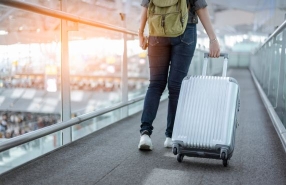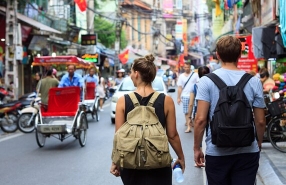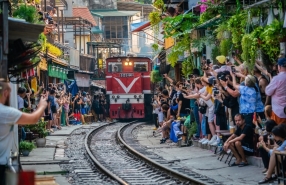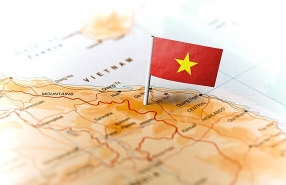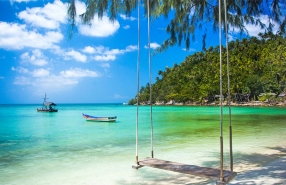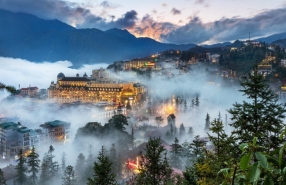What To Do In Kanchanaburi When It Rains - Travel Review By Mrs. Clara

I had read that Kanchanaburi Thailand, nestled between jungle, rivers, and historical memory, was best discovered under sunny skies. And yet… it was Kanchanaburi in the rain that revealed to me its more intimate, more authentic side. Last September, I left the hustle and bustle of the Thai capital for a getaway steeped in nature and remembrance. So, what to do in Kanchanaburi when it rains? In this article, I share my journey through Kanchanaburi in the rain and the activities I enjoyed, perfectly suited to the rainy season. If you're unsure about visiting Kanchanaburi during the rainy season, I hope my experiences will show you there are countless ways to enjoy it, even in the rain.
What to do in Kanchanaburi when it rains?
I. Kanchanaburi, Thailand: What you should know before you go?
1. About Kanchanaburi Thailand
Located just 2 to 3 hours drive from Bangkok, Kanchanaburi is one of the largest provinces in central Thailand and an ideal destination for those looking to explore the surroundings of the capital. Known for its peaceful landscapes and its rich history linked to World War II, it offers a unique combination of nature and remembrance.
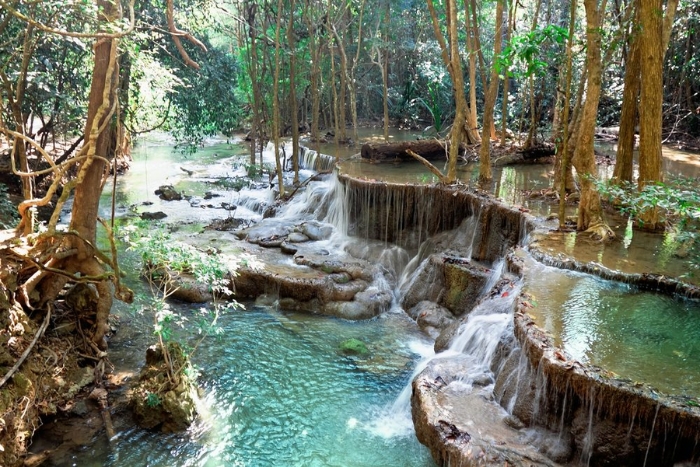
Visit Kanchanaburi, and travelers can discover must-see historical sites such as the Death Railway and the Kanchanaburi War Cemetery, places that mark a tragic period in Thai history. This region also attracts visitors with its wild and unspoiled landscapes, such as Erawan National Park. Finally, Kanchanaburi is home to several ethnic villages where you can discover local traditions, taste regional specialties, and take part in local festivities. Between untamed nature, historical memory, and living culture, Kanchanaburi is an unmissable stop on any trip to Thailand.
2. Weather in Kanchanaburi
Kanchanaburi enjoys a hot tropical climate with three distinct seasons: the hot season (March to June), the rainy season in Kanchanaburi from July to October, and the cool season (November to February). The best time to visit Kanchanaburi is from November to March. During this period, the weather is dry, the temperatures are more pleasant, and it's ideal for outdoor activities. It’s also the peak tourist season, sites can be crowded and accommodations often fill up quickly.
Visiting Thailand in March to June, Kanchanaburi enters its hottest and most humid season. In April in Thailand, Kanchanaburi becomes particularly stifling, with temperatures often exceeding 40°C. Without air conditioning, it becomes difficult to rest, and even simple activities require constant hydration to avoid heatstroke.
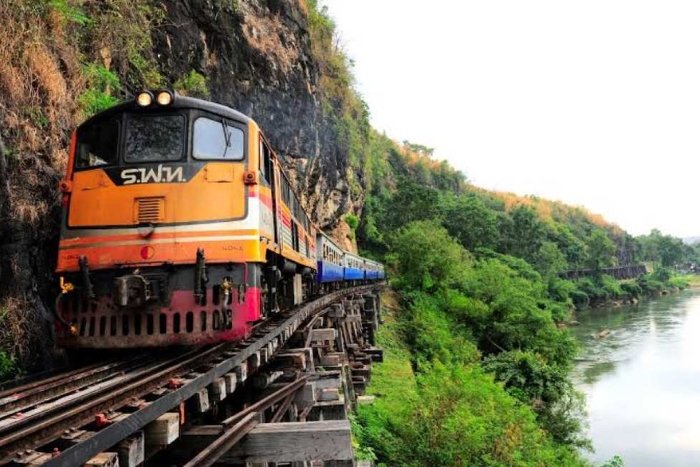
The rainy season in Kanchanaburi lasts from July until the end of October, with rainfall gradually decreasing as November approaches. In Kanchanaburi, it rarely rains for several days in a row. Rainy days are often followed by cloudy or sunny ones.
Wanting to discover Thailand in a different way, I decided to visit Kanchanaburi Thailand in September, right in the middle of the rainy season in Kanchanaburi, and I was pleasantly surprised. Despite a few showers, most days were sunny or partly cloudy, allowing me to fully enjoy my visits. I had actually asked myself what to do in Kanchanaburi when it rains?, and I ended up finding some great surprises.
II. Why visit Kanchanaburi during the rainy season?
Despite the rainy season in Kanchanaburi, September and October turned out to be ideal times to discover Kanchanaburi. It was the low tourist season, offering better rates and a quieter atmosphere, far from the crowds.
In September, which marked the peak of the monsoon, Kanchanaburi rainy season recorded about 10 days of rain, over 18 cloudy days, and a few days of full sunshine. Temperatures hovered around 33°C during the day and dropped to 27–28°C at night. It usually didn’t rain for several days in a row, leaving enough windows of time for sightseeing.
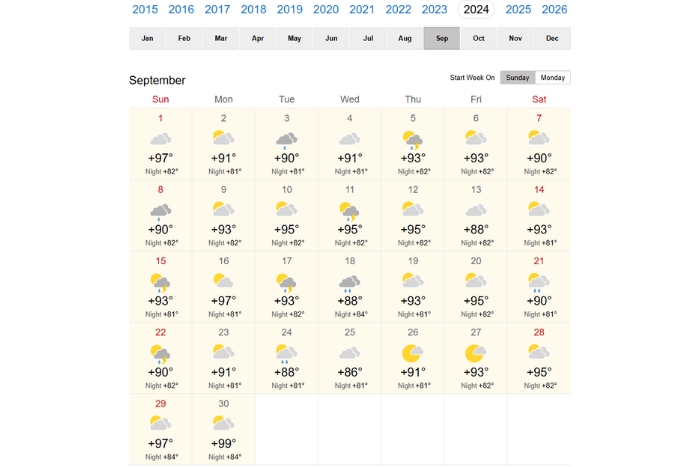
Personally, I found that visiting Kanchanaburi when it rains added a unique atmosphere to my stay in Thailand. The waterfalls were more impressive, the vegetation more lush, and the air fresher. The days of light rain were also perfect for diving into the local culture through indoor activities. This way, I discovered a more intimate, deeper Kanchanaburi, very different from what one experiences in the high season. If you're wondering what to do in Kanchanaburi when it rains, know that the city has much more to offer than you might expect, even under the rain.
III. What to do in Kanchanaburi when it rains? Must-do activities for visiting Kanchanaburi in the rain
1. Visit the museums of Kanchanaburi
When the weather turns rainy, the museums in Kanchanaburi are among the best things to do in Kanchanaburi to dive into the region’s history. What to do in Kanchanaburi when it rains? I had the chance to visit the Death Railway Museum and Research Centre, a captivating museum that recounts the history of the construction of the Thailand - Myanmar Railway during World War II. Just a few steps away, the Kanchanaburi War Cemetery, with nearly 7,000 war graves, is a poignant memorial, where each tomb is meticulously maintained amidst immaculate lawns.
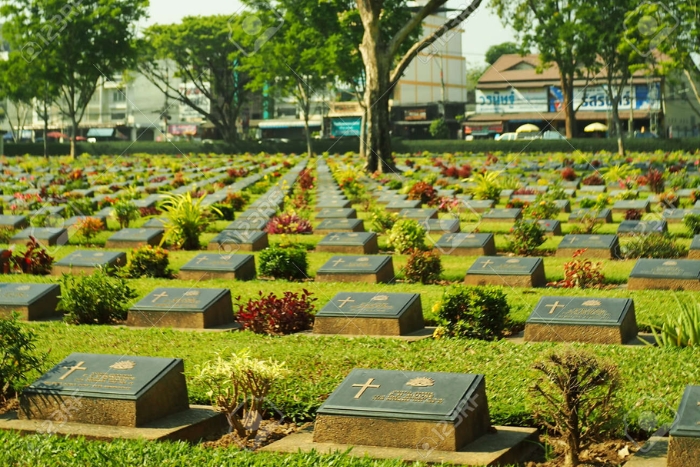
While exploring during the Kanchanaburi rainy season, still in the town center and close to the famous Bridge over the River Kwai, the JEATH Museum (an acronym for Japan, England, Australia/America, Thailand, and Holland) displays artifacts, photographs, and period documents. It helps visitors better understand the horrors of war and the heartbreaking sacrifices of the prisoners who worked on the infamous Death Railway. These museums are perfect options to visit Kanchanaburi when it rains.
2. Explore Wat Tham Khao Pun
What to do in Kanchanaburi when it rains? Visiting Wat Tham Khao Pun, a unique Buddhist cave temple in Kanchanaburi, is a must during the Kanchanaburi rainy season. Nestled in the heart of a limestone formation, this spiritual site features nine interconnected caves, adorned with Buddha statues, wall paintings, and stunning natural stalactite formations. Each passage is illuminated, offering visitors a smooth exploration experience in an atmosphere that is both sacred and mysterious.
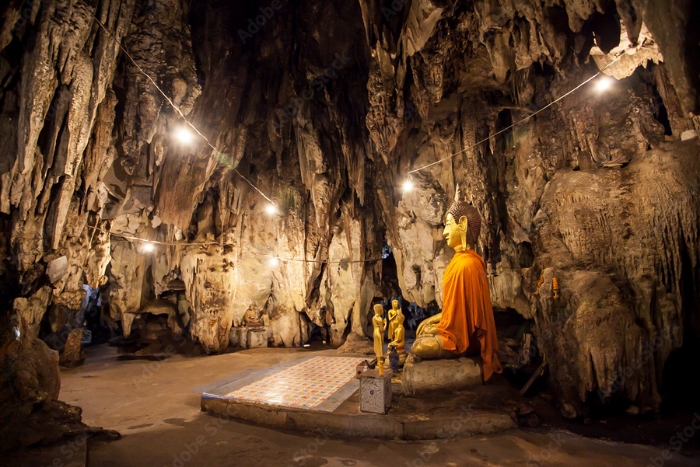
Beyond its religious significance, Wat Tham Khao Pun holds strong historical value. During World War II, it was used as a detention site for prisoners of war. This blend of spirituality, history, and nature makes it a fascinating place for culture lovers and adventurers, even when you visit Kanchanaburi during the rainy season.
On my trip to Kanchanaburi, the Wat Tham Khao Pun, easily accessible from the city center, was an unmissable stop. It’s an ideal visit for the Kanchanaburi rainy season, or simply to answer the question: What to do in Kanchanaburi when it rains?
3. Visit the bridge over the river Kwai and go kayaking
No visit to Kanchanaburi during the rainy season is complete without seeing the iconic Bridge over the River Kwai, one of the best things to see in Kanchanaburi and a powerful symbol of the region. This bridge is part of the infamous Death Railway, constructed by the Japanese army during World War II. I was fortunate enough to walk across the bridge and admire the peaceful beauty of the Kwai River below.
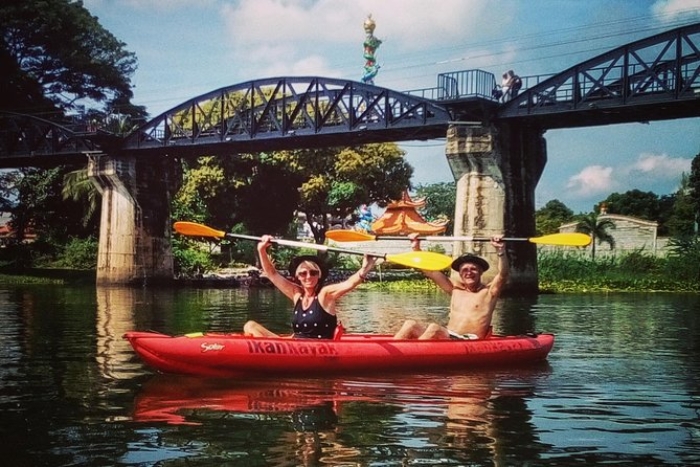
What to do in Kanchanaburi when it rains? To extend the experience, I highly recommend a kayaking excursion on the River Kwai, especially during the Kanchanaburi rainy season. The stronger current makes the adventure even more thrilling. It’s a unique and immersive way to discover the nature of Kanchanaburi, up close with the water and surrounded by spectacular scenery.
4. Taste Kanchanaburi local specialties
During my visit to Kanchanaburi during the rainy season, I had the chance to try several Thai dishes and especially local specialties that make this region unforgettable. Among my culinary discoveries, the Tom Yum Kung soup with fish stood out the most. This classic Thai dish, with its tangy, spicy flavors and aromatic herbs, is perfect during the Kanchanaburi rainy season.
Another local favorite I loved was stir-fried Pako Fern in oyster sauce—a wild fern growing along the River Kwai, prized for its simple, authentic taste. These culinary experiences are ideal for those wondering what to do in Kanchanaburi when it rains.

Kanchanaburi’s cuisine also features traditional dishes like Khanom Jeen Nam Ya, fresh rice noodles served with a rich, flavorful curry. It’s a true delight. For something sweet, I recommend Khanom Krok, small round coconut pancakes that are crispy on the outside and soft on the inside. The blend of coconut milk and grated coconut delivers a smooth, sweet flavor, perfect for a snack during the Kanchanaburi rainy season.
These dishes, enjoyed between two rain showers, allowed me to experience a different side of the city. Kanchanaburi in the rainy season isn’t a constraint, but rather an opportunity to savor authentic and delicious moments.
5. Relax in a café overlooking the river Kwai
What to do in Kanchanaburi when it rains? One great option is to settle into a cozy riverside café. Visiting Kanchanaburi in the rainy season offers a uniquely calming atmosphere, especially when you’re sheltered and comfortable. Kanchanaburi has several charming cafés perfect for relaxing on a typical rainy day during the Kanchanaburi rainy season.
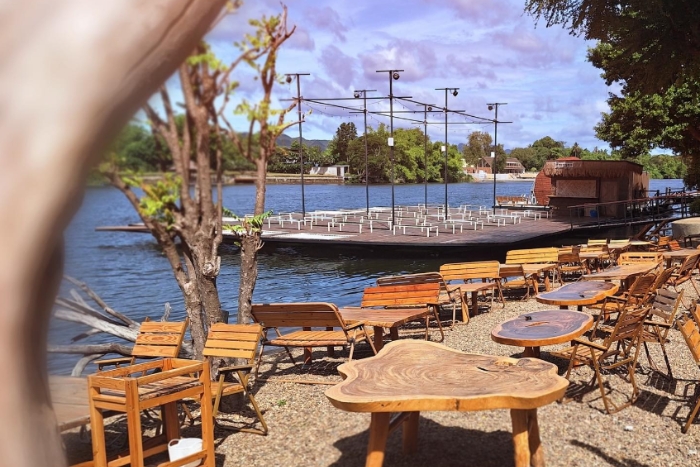
I chose to spend some time at Tongkan Café, a spacious and pleasant spot located near the famous Bridge over the River Kwai. The café has a lovely open terrace with soft cushions, ideal for enjoying the view once the rain stops. While I was there, I took shelter during a sudden downpour and admired the peaceful beauty of Kanchanaburi in the rain, especially the silver reflections on the River Kwai.
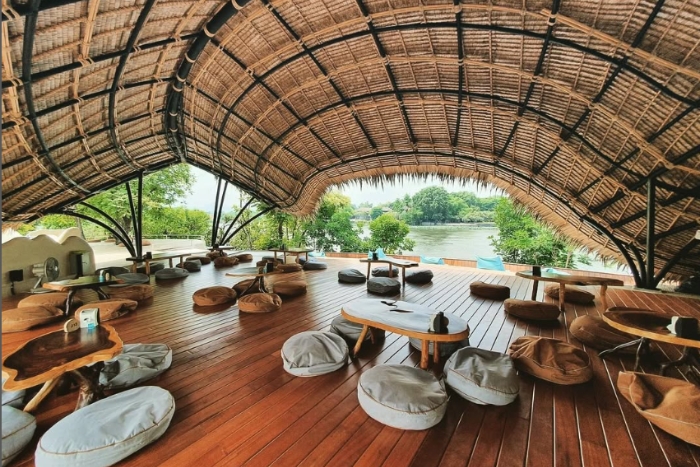
Protected from the rain, with a warm coffee in hand, I spent a lovely afternoon writing down my travel memories. This gentle, comforting moment is typical of the Kanchanaburi rainy season, when the city reveals its quieter and more intimate side.
If you’re wondering what to do in Kanchanaburi when it rains, don’t hesitate to explore the local cafés, they’re not only perfect for staying warm and dry but also for enjoying the Kanchanaburi rainy season in a calm, cozy ambiance.
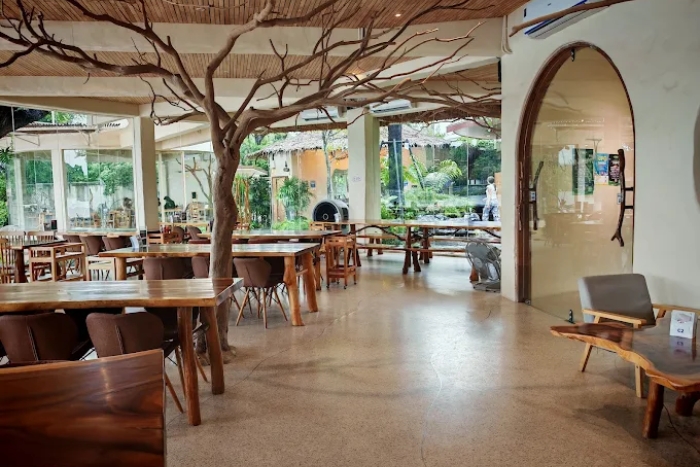
6. Explore Kanchanaburi night market
What to do in Kanchanaburi when it rains? On a lightly drizzling evening in Kanchanaburi, I decided to visit the JJ Night Market, located near Beibi Railway Station. This market is one of the busiest and liveliest in the city, with a wide variety of local products and specialties. Visiting Kanchanaburi in the rain may seem difficult, but this market is perfect for continuing to explore without worrying about the weather. Most of the stalls are covered, making it an ideal activity during the rainy season in Kanchanaburi.
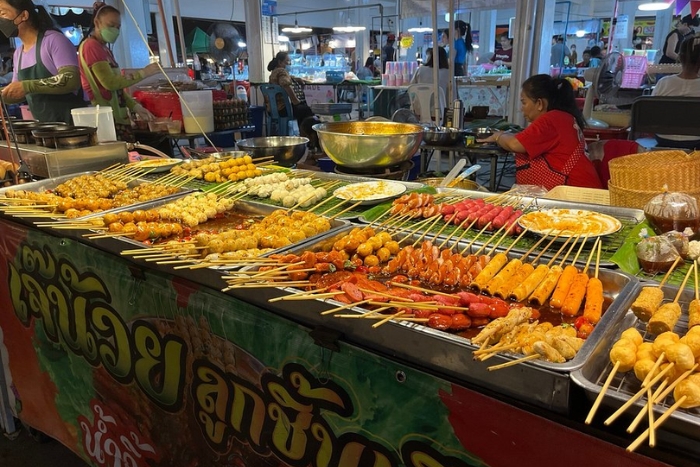
The market is well-organized into two main zones: one focused on street food, and the other offering clothes, accessories, electronics, and souvenirs. The prices are very affordable, and the street food is simply delicious. I tried grilled corn, sushi, and even… fried insects! The market also has massage services, and for around 60 baht (about $1.90), I enjoyed a relaxing foot massage after browsing the stalls and tasting a few local treats.
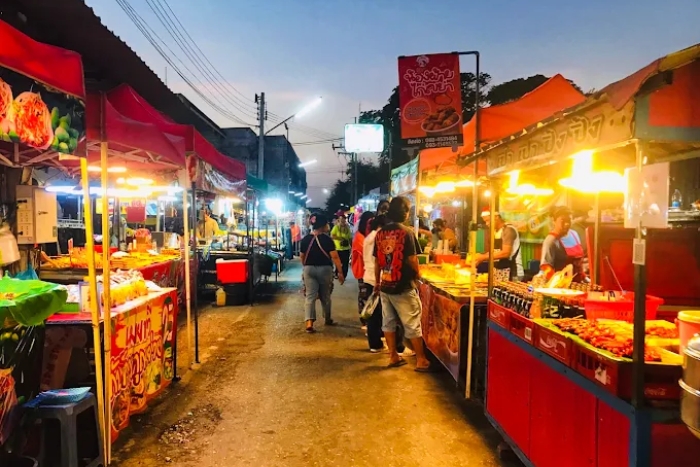
Whether it's the rainy season in Kanchanaburi or not, an evening at the JJ Night Market was, for me, an authentic, local, and soothing experience, not to be missed during a trip to Kanchanaburi. For those still wondering what to do in Kanchanaburi when it rains, the JJ Night Market is a simple and enriching answer.
IV. What precautions should be taken when visiting Kanchanaburi in the rain?
Traveling to Kanchanaburi during the rainy season requires a bit of preparation. Here are a few simple tips to help you fully enjoy your trip to Thailand, even under the showers.
Pack the right gear: Bring a compact umbrella, a lightweight raincoat, and non-slip shoes. Paths can get slippery, especially in caves. A waterproof bag or protective covers for your electronic devices can also come in handy.
Check schedules in advance: Some tourist sites, such as museums or cultural centers, may close earlier during the low season. Be sure to check their opening hours before heading out.
Plan ahead, but stay flexible: Traveling to Kanchanaburi in the rainy season doesn’t mean you need to cancel your trip. By checking the weather a few days before your departure and staying flexible, you can enjoy a quieter, greener Kanchanaburi itinerary.
Opt for indoor activities during heavy rain: Visiting a museum or enjoying local food at a riverside café can turn a rainy moment into a pleasant memory.
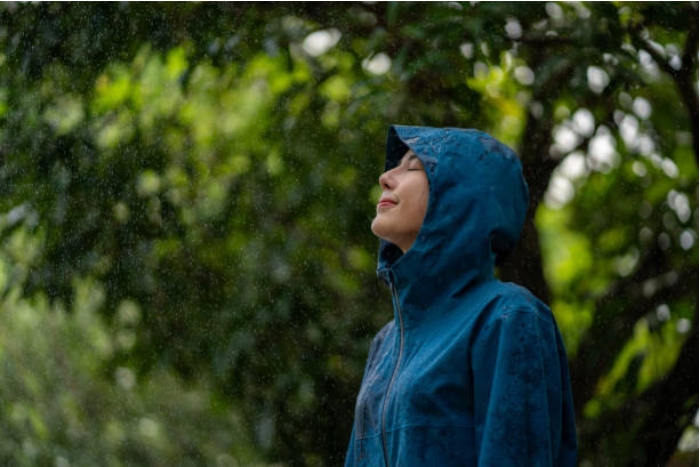
To complement your visit:
The rainy season in Kanchanaburi reveals a whole new side of the region – more intimate, greener, and away from the crowds. What to do in Kanchanaburi when it rains? From museums and temples to local specialties, there are a thousand ways to enjoy this area, even Kanchanaburi in the rain. With everything I’ve shared, a little curiosity and flexibility are all it takes to turn the Kanchanaburi rainy season into an unforgettable journey. If you dream of a trip to Thailand, regardless of the season, AUTOUR ASIA, Thailand tour operator, can assist you in creating a unique experience tailored to your desires, even under the rain!
You might be interested in:
Yes, it is absolutely possible to visit Erawan Falls during the rainy season in Kanchanaburi. During this time, the waterfalls are particularly spectacular due to the high water flow caused by tropical rains. However, in case of heavy rainfall, the trails may become slippery, and some areas of the park may be temporarily closed. Therefore, visiting Erawan Falls is an activity to consider with caution during the rainy season in Kanchanaburi, especially if you are traveling with children. To make the most of your Kanchanaburi rainy season trip, don’t hesitate to check our selection of things to do and see in Kanchanaburi, even when it rains.
Kanchanaburi offers a wide range of accommodations, from 3-star hotels in Kanchanaburi and homestays in Kanchanaburi to nature resorts. Floating hotels on the Kwai River are particularly popular, even during the rainy season in Kanchanaburi: a peaceful and immersive experience, perfect for listening to the rain fall in a tropical setting. Whether you are traveling as a couple, with family, or in a small group, turn to AUTOUR ASIA, a travel agency in Thailand, to easily find accommodation that suits your needs.
To truly enjoy the natural, historical, and cultural treasures of Kanchanaburi, it is recommended to stay between 1 day in Kanchanaburi and 5 days in Kanchanaburi, whether during the rainy season in Kanchanaburi or not. This will allow you to explore the famous Kwai River Bridge, the Kanchanaburi museums, Erawan National Park, Hellfire Pass, and perhaps even explore the ethnic villages. To combine your Kanchanaburi trip with other regions, consider our tours in Thailand: 10 days in Thailand, 14 days in Thailand, 15 days in Thailand or even 21 days in Thailand.
Related travel guide
Other similar articles
CUSTOMIZABLE BY LOCAL EXPERTS
Personalized trip at the original price!
REFUND GUARANTEE
We believe in our work and promise to give you money back.
GOOD PRICE / QUALITY
95% satisfied more than expected!
24/7 LOCAL SUPPORT
We are always available online to provide assistance at any time.
Most read articles
Autour Asia is highly recommended on
Embracing the mission of "Satisfied more than expected" and providing authentic experiences, we have received numerous recommendations on reputable travel forums:












